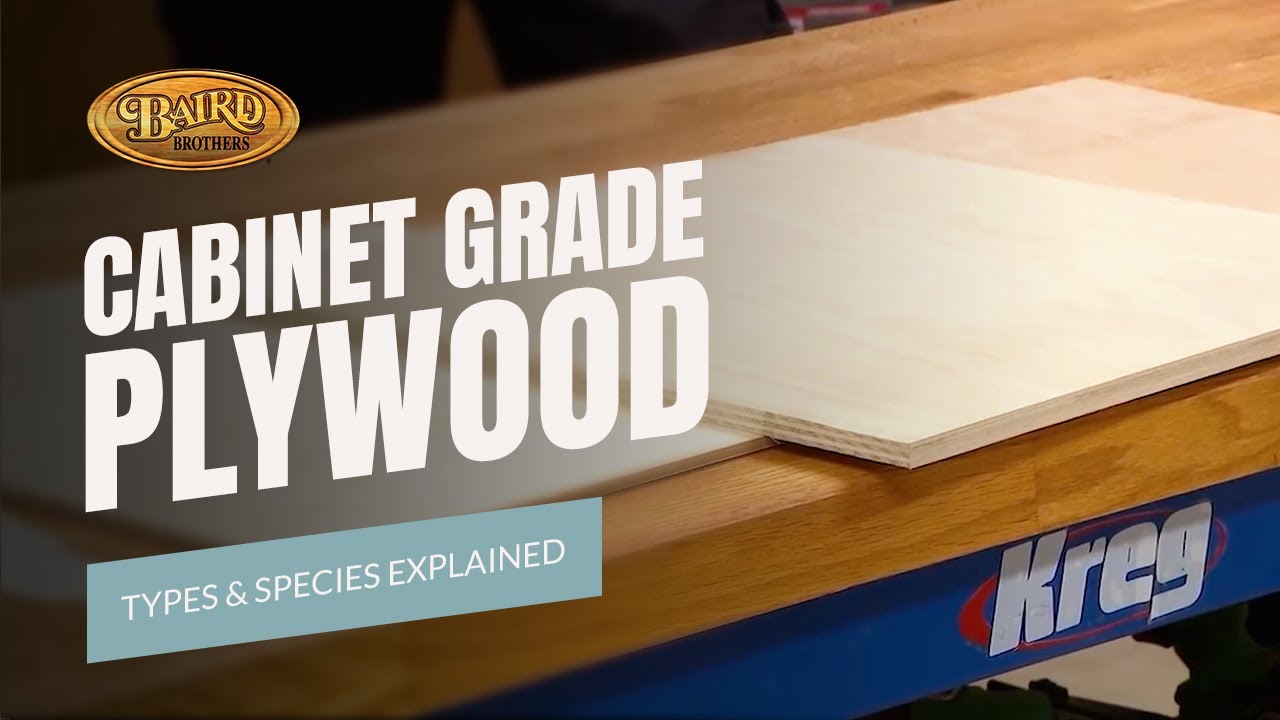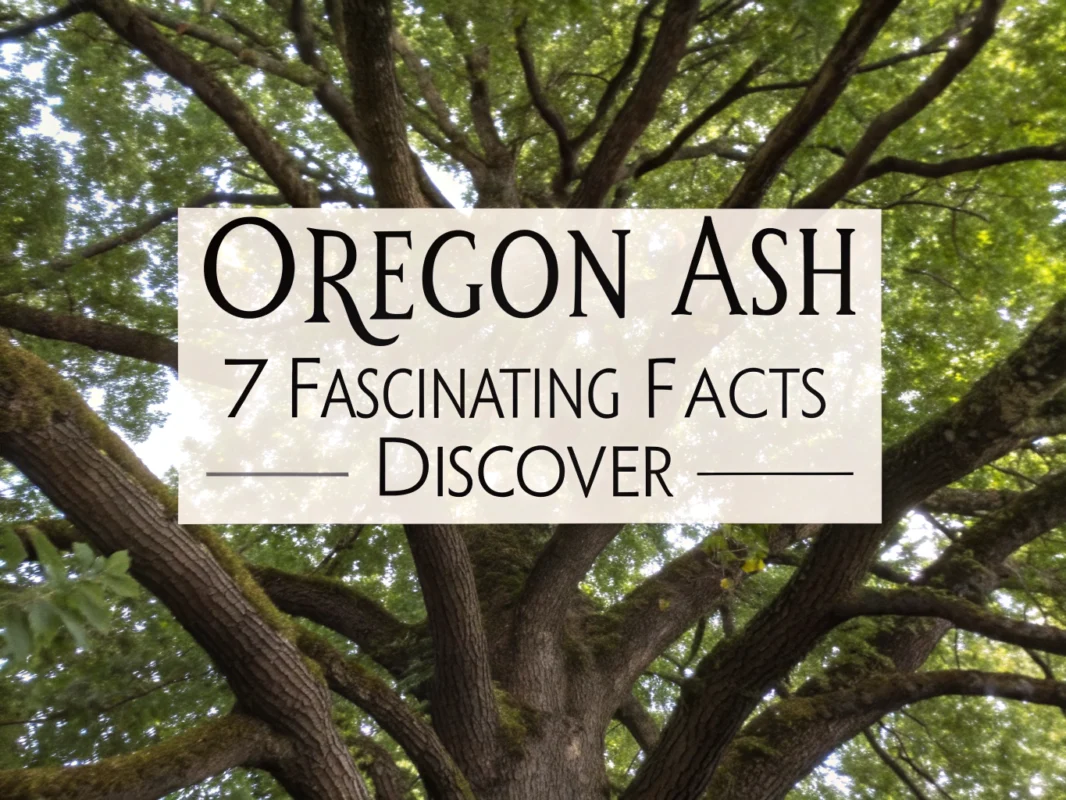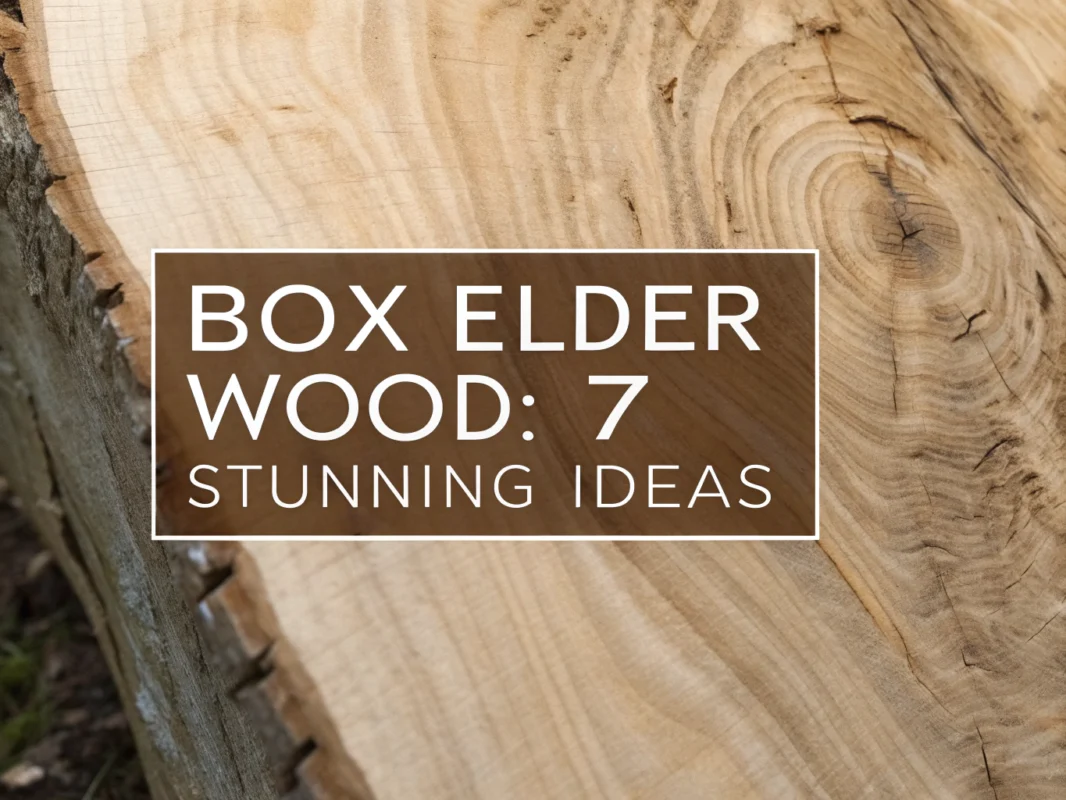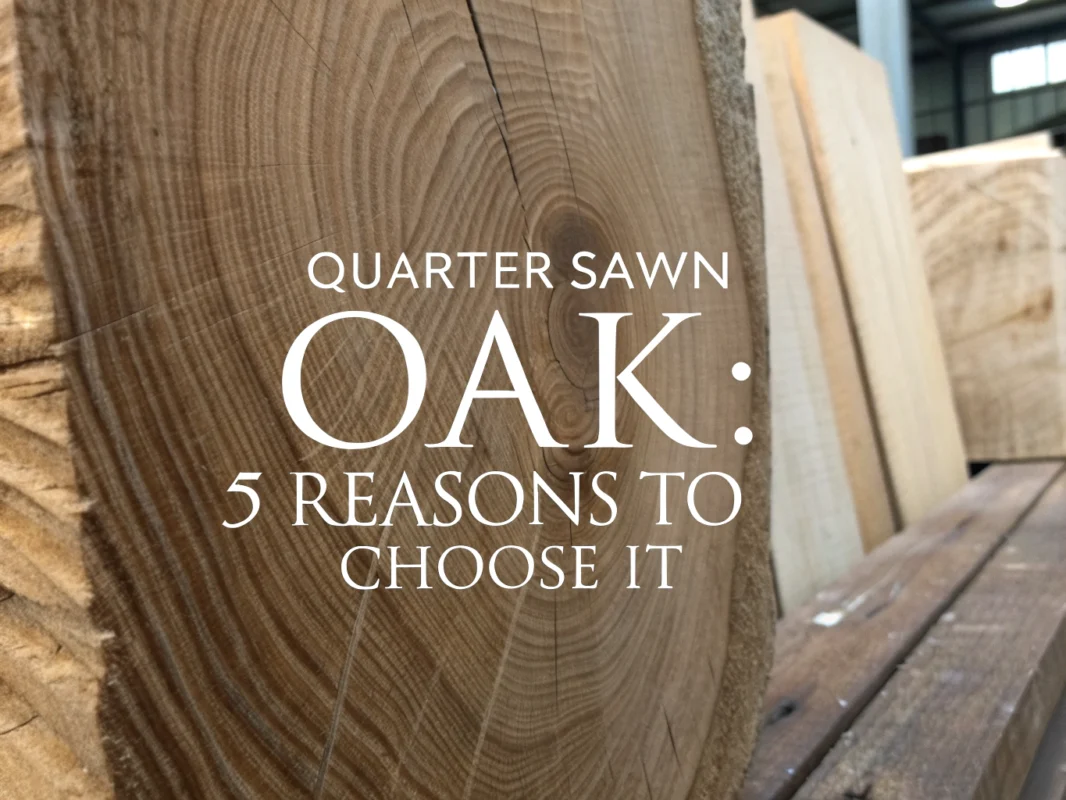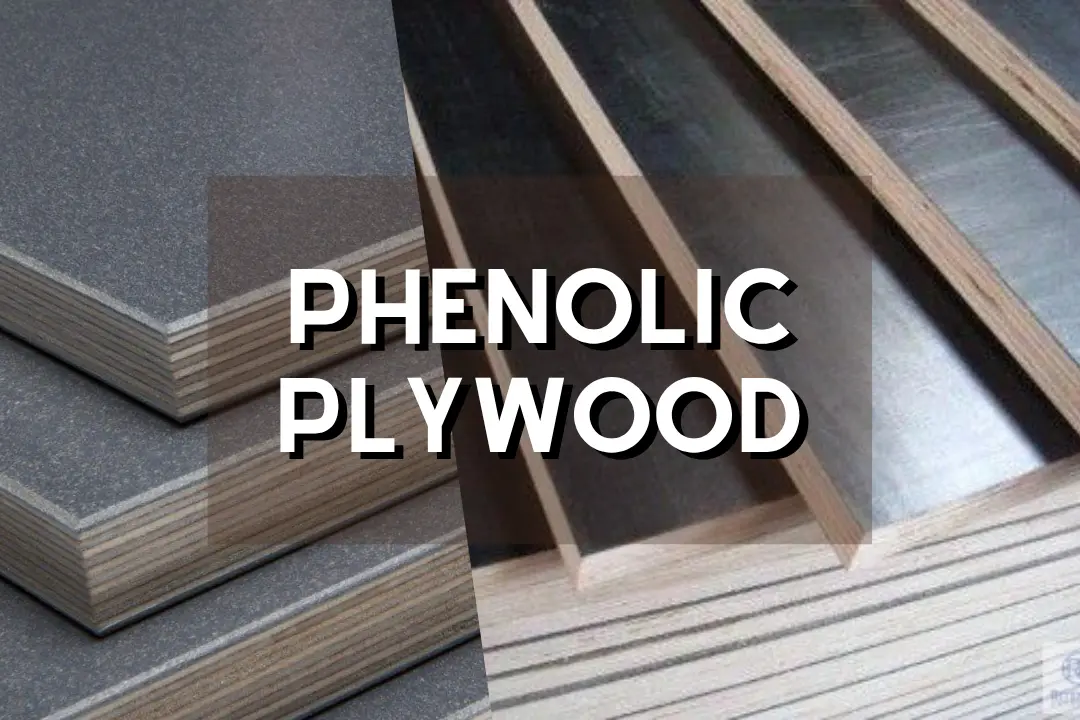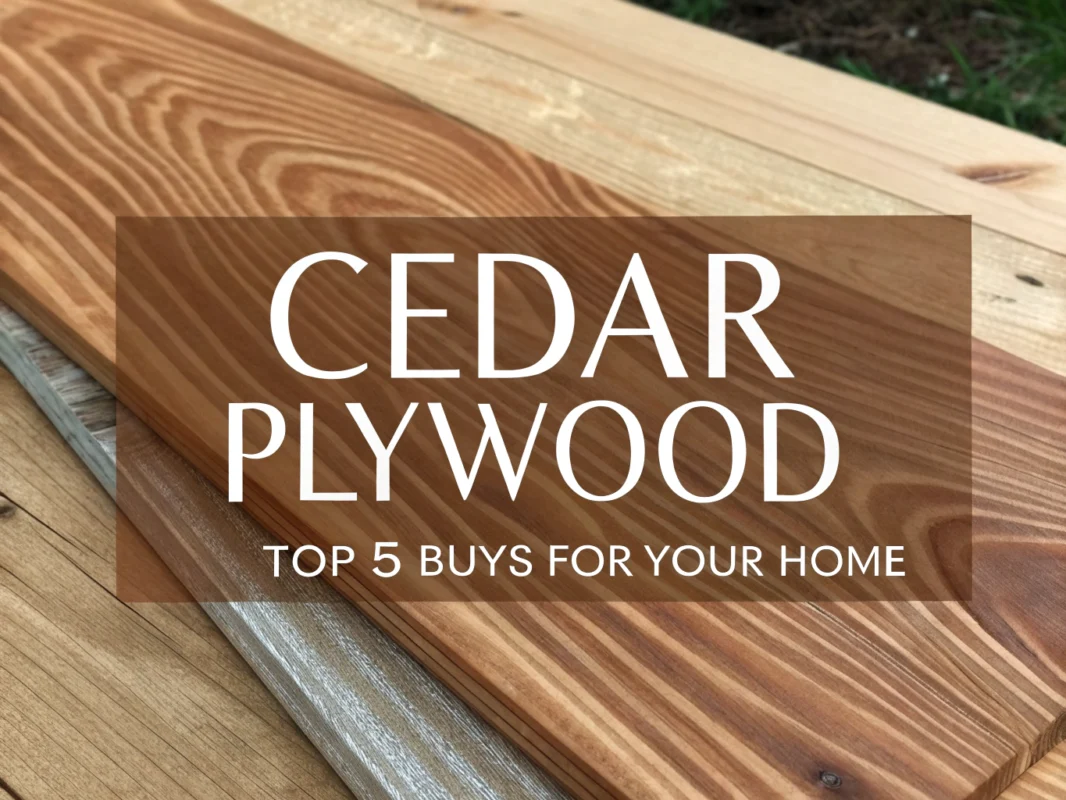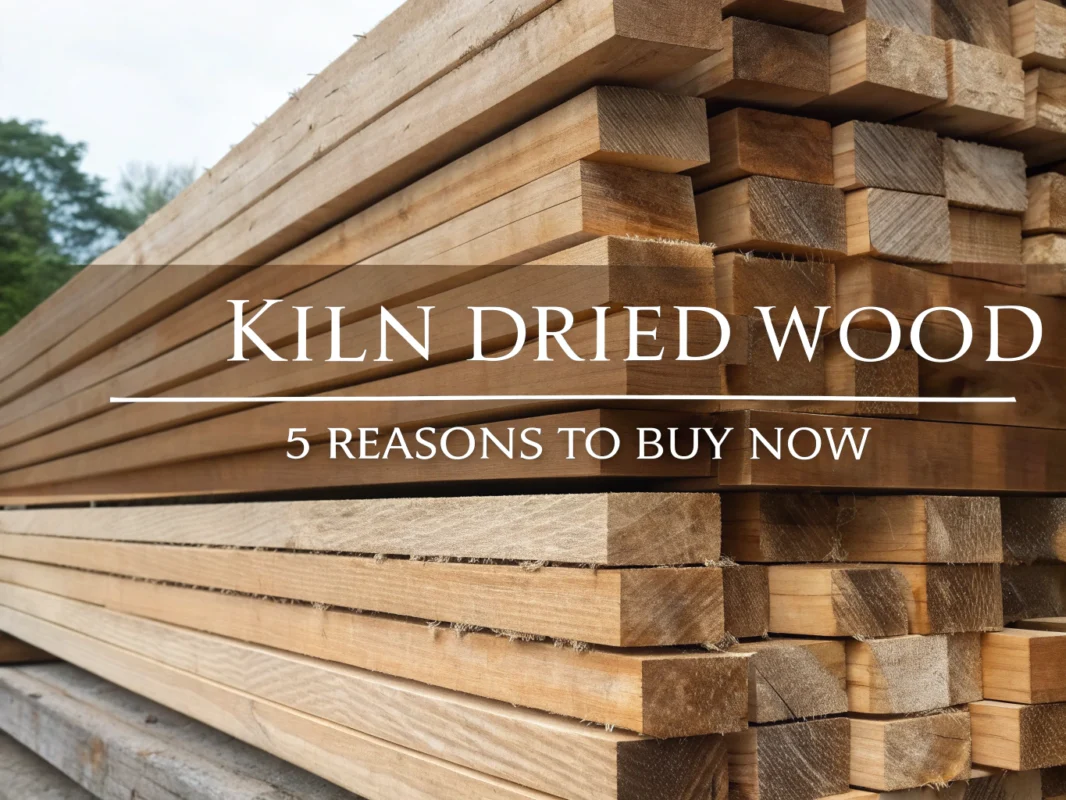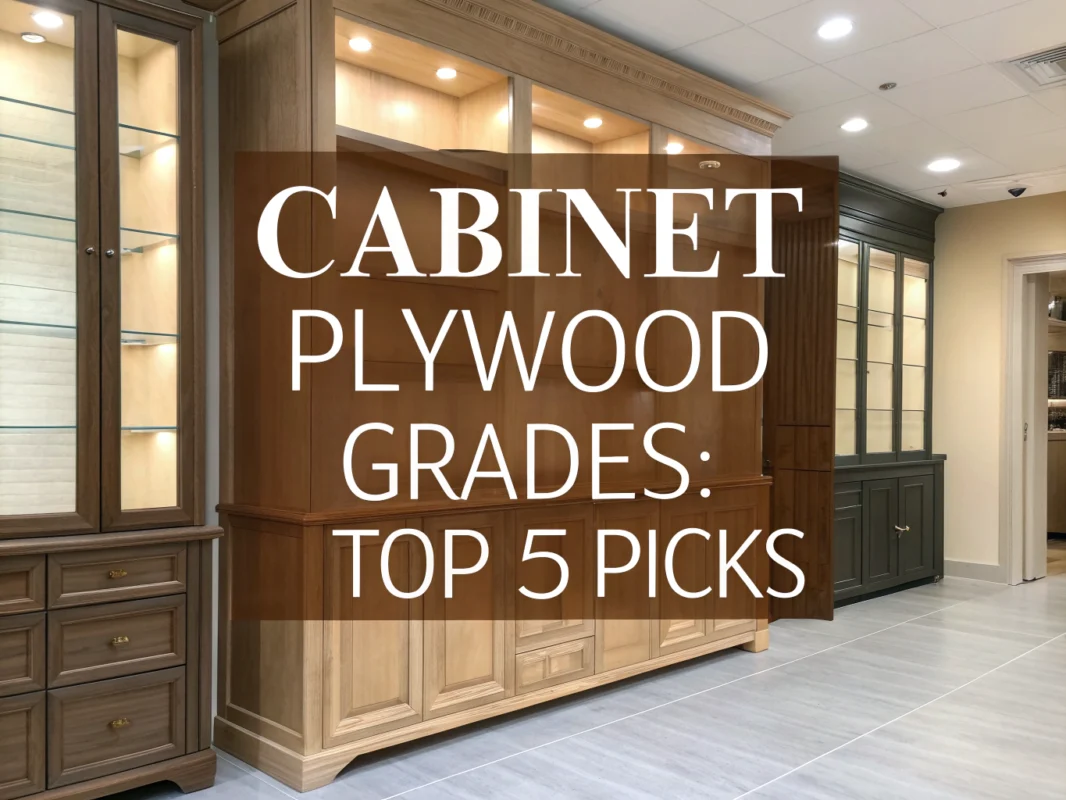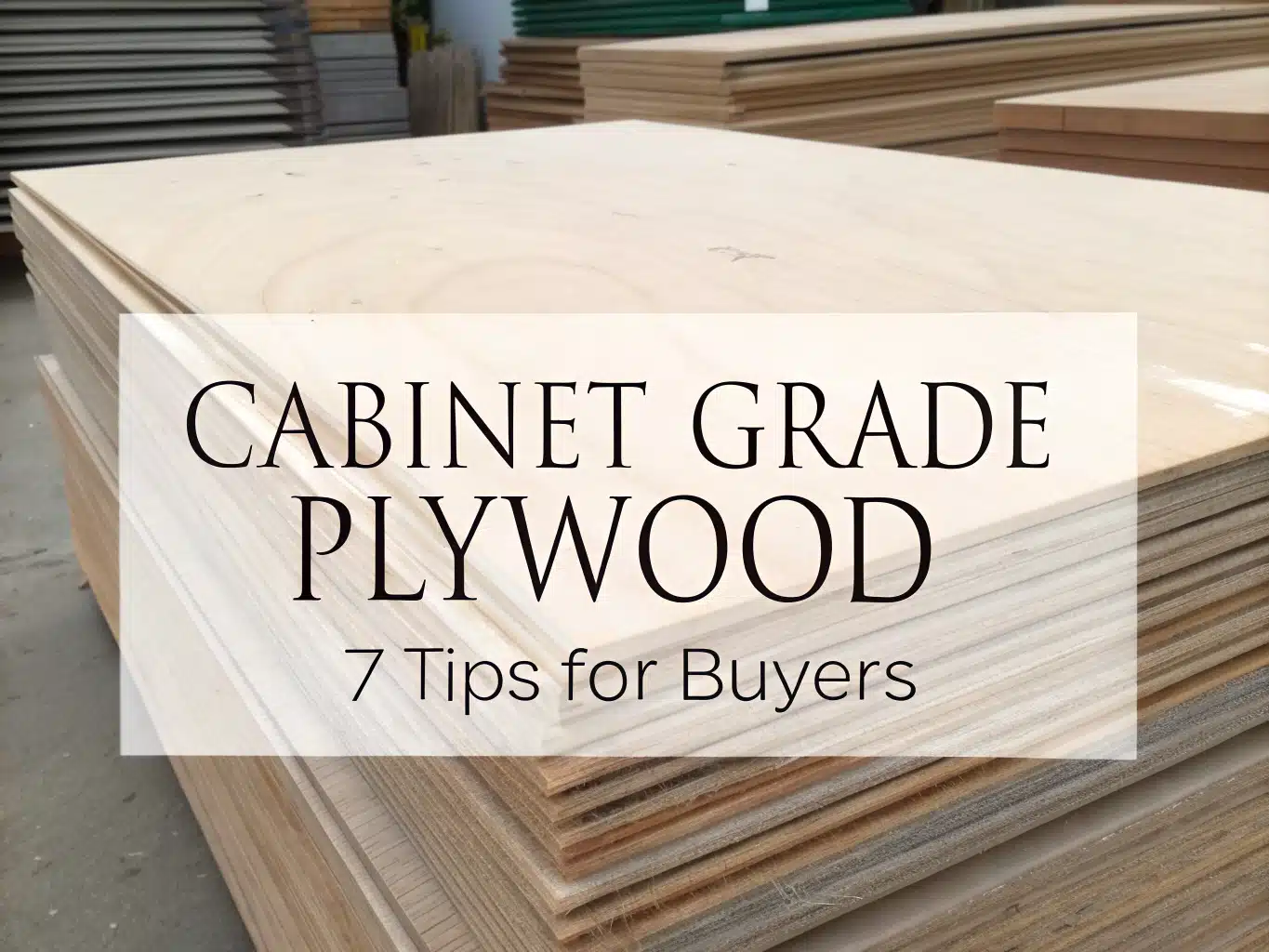
Cabinet Grade Plywood: 7 Tips for Buyers

Ever walked into a home improvement store feeling lost in a maze of wood options? You’re not alone. Picking cabinet grade plywood can seem overwhelming with so many choices. But fear not, we’re here to simplify the process with seven easy tips to help you make the best choice for your project.
Table of Contents
Cabinet grade plywood is a top-quality type of engineered wood. It is made for high-end cabinets and furniture. This plywood is important for both looks and strength. Quality cabinet plywood features superior surface veneers, precise manufacturing standards, and enhanced durability that sets it apart from standard construction-grade materials.
Understand What Cabinet Grade Plywood Really Means
Cabinet grade plywood, also called furniture grade plywood, is a premium multilayered wood panel specifically engineered for cabinetry, furniture, and interior applications. This specialized plywood features alternating grain direction in each layer for superior strength, stability, and long-term performance compared to standard construction materials.
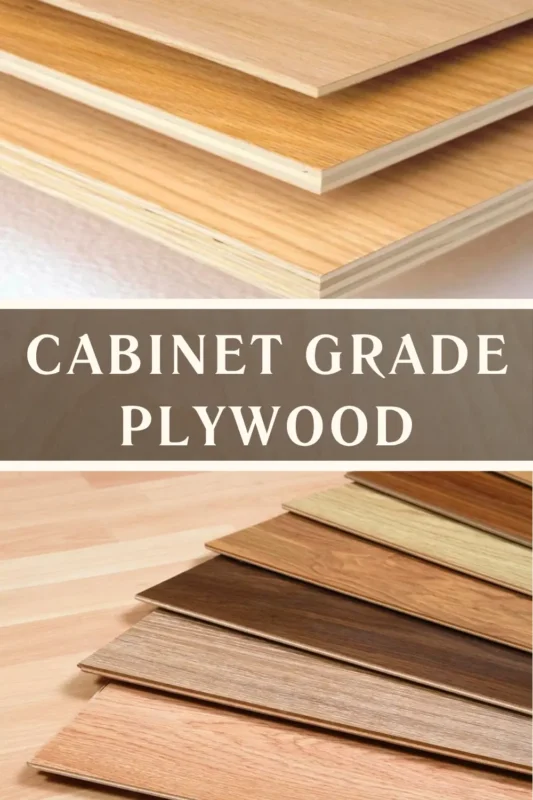
Definition and Key Characteristics
The defining feature of cabinet grade plywood lies in its smooth, even outer veneer made from hardwoods like maple, birch, or oak. According to Alvibel, this surface quality creates an attractive, defect-free appearance that’s ideal for visible applications and finishing. The cross-laminated construction provides exceptional dimensional stability that resists warping, swelling, and cracking.
Surface Quality Standards
Surface quality standards for cabinet grade plywood are significantly higher than construction materials. The face veneers undergo careful selection and processing to eliminate knots, voids, and other defects. Premium cabinet plywood features sanded surfaces ready for staining or painting without additional preparation work.
Strength and Stability Features
Cabinet grade plywood delivers superior strength through its engineered construction. Multiple thin wood layers are bonded with high-quality adhesives, creating a panel that’s stronger than solid wood in many applications. This construction method prevents splitting along grain lines and provides consistent performance across the entire sheet.
Differences from Construction-Grade Plywood
Construction-grade plywood prioritizes structural strength over appearance, often featuring rough surfaces and visible defects. Cabinet grade plywood uses higher-quality veneers, more plies, and stricter defect controls. The result is a smoother, more attractive material that’s ready for fine finishing work without extensive preparation.
Know Your Plywood Grades Inside and Out
Plywood grading systems help buyers select the right material for their specific needs. Each grade designation refers to the quality of the face and back veneers, with letter grades indicating the level of defects and surface smoothness you can expect.
A-Grade: Flawless Finish for Visible Surfaces
A-grade plywood represents the highest quality available, featuring virtually flawless veneers free of knots and defects. Forest Plywood notes that A-grade surfaces are sanded smooth and ideal for staining or clear finishes where the wood grain will be visible. This grade works perfectly for cabinet door faces and other prominent surfaces.
B-Grade: Minor Flaws for Painted Projects
B-grade plywood contains minor flaws like small knots or patches that have been filled during manufacturing. These surfaces remain suitable for visible applications but may require light sanding or repair work. B-grade offers a good balance of cost and appearance, making it ideal for painted cabinet projects where perfect grain isn’t necessary.
C-Grade: Budget Option for Hidden Areas
C-grade plywood features noticeable knots and imperfections up to 1.5 inches in diameter. These defects may require patching or covering before finishing. C-grade works well for hidden cabinet areas like interior shelving or structural components where appearance doesn’t matter as much as functionality.
D-Grade: Structural Use Only
D-grade plywood permits the most flaws and defects, including large knots up to 2.5 inches. This grade is used only where appearance truly doesn’t matter, such as structural backing or bracing inside cabinets. D-grade isn’t suitable for any visible cabinet surfaces.
Grade Combinations (AB, AC, BC, CDx)
Plywood grade combinations indicate the quality of both face and back surfaces. AB means A-grade face with B-grade back, offering premium visible surfaces with slightly lower quality backs. AC and BC grades provide cost savings for applications where only one side will be visible.
Choose the Right Veneer Species for Your Project
Veneer species selection affects both the appearance and cost of your cabinet project. Different wood species offer unique grain patterns, colors, and working characteristics that influence the final result.
Popular Hardwood Options (Maple, Birch, Oak)
Maple plywood provides a light, consistent grain pattern that accepts stains evenly and works well for painted finishes. Birch offers similar characteristics with slightly more pronounced grain, making it popular for both natural and painted cabinets. Oak plywood features distinctive grain patterns that create traditional cabinet looks, though it requires careful stain selection to avoid blotchy results.
Premium Species (Walnut, Cherry, Mahogany)
Cherry plywood offers rich, warm tones that deepen with age and exposure to light. Walnut provides dramatic dark grain patterns perfect for contemporary cabinet designs. Mahogany plywood delivers classic elegance with its reddish-brown coloring and straight grain patterns, though it commands premium pricing.
Matching Veneer to Intended Finish
Light-colored species like maple and birch work best for painted finishes because they won’t show through light colors. Darker species like walnut and cherry are ideal for natural or stained finishes where you want to showcase the wood grain. Consider the final color when selecting veneer species to avoid disappointment.
Cost Considerations by Species
Domestic hardwoods like maple and birch typically cost less than exotic species. Premium options like walnut and cherry can double or triple the material cost compared to standard species. Budget-conscious builders often choose maple or birch for painted projects while reserving premium species for natural finishes where the grain will be visible.
Select Proper Thickness and Sheet Sizes
Thickness and sheet size selection directly impacts both the structural performance and cost of your cabinet project. Different applications require specific thicknesses to prevent sagging and provide adequate strength.
Standard Thicknesses (1/4″, 1/2″, 3/4″)
Quarter-inch plywood works well for cabinet backs and drawer bottoms where weight isn’t a concern. Half-inch thickness provides good strength for cabinet sides and shelving in smaller cabinets. Three-quarter inch plywood offers maximum strength for heavy-duty shelving, countertop support, and structural components that must bear significant weight.
Common Sheet Sizes (4×8 feet and smaller)
Standard 4×8 foot sheets work well for large cabinet projects and provide the most economical material usage. Smaller sheets reduce waste for compact projects but typically cost more per square foot. Pre-cut sizes save time and transportation challenges for smaller workshops or DIY projects.
Here are some popular Baltic birch options for cabinet projects:
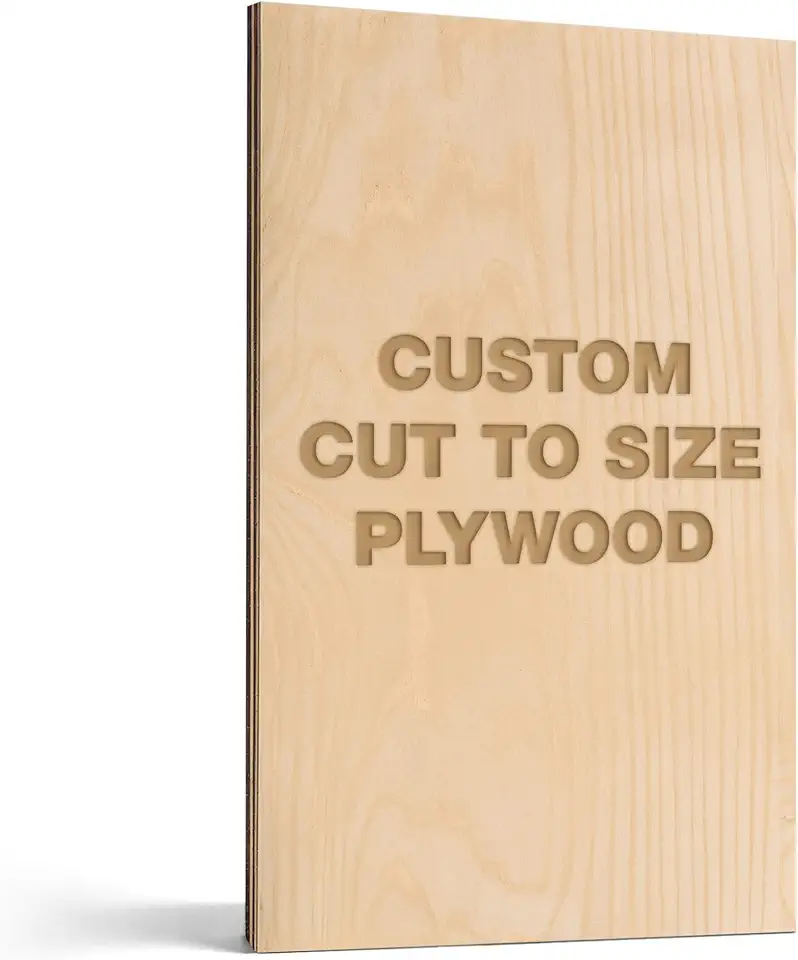
Custom-Cut Baltic Birch Plywood
- Precisely cut to your craft needs
- Durable B/BB grade quality
- Ideal for laser and CNC projects
- Stronger and more reliable than basswood
- Perfect for wood burning and crafting.

8x12 Baltic Birch Sheets - 1/2 Inch
- Superior strength in crafting wood
- B/BB grade ensures smooth finish
- Great for laser and CNC cutting
- Perfect size for crafting and shelves
- Comes in a convenient two-pack.

3mm Baltic Birch Craftwood Sheets
- 1/8-inch thickness for precision projects
- Smooth B/BB veneer for fine finishes
- Suitable for DIY, laser cutting, engraving
- Ideal for painting and drawing
- Includes six quality pieces.

Premium Thin Baltic Birch - 3mm
- Thin wood perfect for delicate projects
- High-quality B/BB grade veneer
- Great for arts and crafts
- Ideal for laser cutting and sawing
- Includes six flat, even sheets.
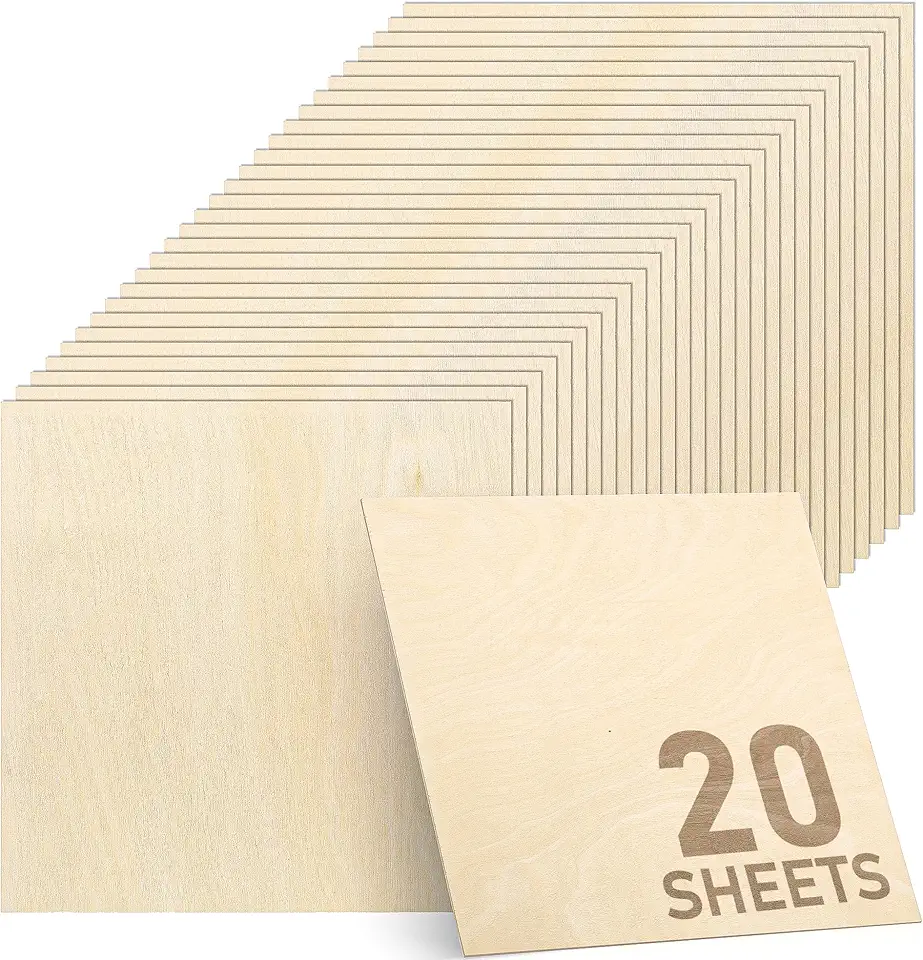
1/8 Inch Baltic Birch Squares
- Perfect size for crafting versatility
- Ideal for laser and CNC work
- FSC Certified for eco-friendliness
- Pack of 20 ensures ample supply
- Smooth finish ready for painting or decorating.

24x36 Baltic Birch - 1/2 Inch
- B/BB grade for superior surface quality
- Ideal for laser cutting and woodworking
- Larger size for more ambitious projects
- Provides a sturdy, durable option
- Great for crafting sturdy shelves.
Thickness Requirements for Different Applications
Cabinet doors typically require 3/4-inch thickness for proper hinge mounting and structural integrity. Drawer fronts can use 1/2-inch or 3/4-inch depending on the size and style. Fixed shelving needs 3/4-inch thickness to prevent sagging, while adjustable shelves can often use 1/2-inch material for lighter loads.
Structural vs. Surface Applications
Structural applications like cabinet frames and countertop support require maximum thickness for strength. Surface applications like door panels or decorative elements can use thinner materials to reduce weight and cost. Load-bearing components should always use 3/4-inch thickness regardless of other considerations.
Inspect Surface Quality and Core Construction
Proper inspection before purchase prevents disappointment and ensures you get the quality you’re paying for. Both surface and internal construction quality affect the final results of your cabinet project.
How to Examine Face Veneer Quality
Look for smooth, uniform faces free of knots, voids, or open defects. The veneer should be properly bonded without bubbles or loose areas. Consistent grain patterns indicate quality manufacturing and careful veneer selection. Run your hand across the surface to check for roughness or imperfections that might show through finishes.
Checking for Knots, Voids, and Defects
Small knots might be acceptable depending on your grade and intended use, but large knots can weaken the material. Voids in the surface veneer will show through stains and clear finishes. Filled defects should be smooth and well-integrated into the surrounding wood grain.
Evaluating Core Construction and Ply Count
Examine the edges to check for even plies and minimal gaps in the core construction. More plies generally indicate better quality and strength. Hardwood cores provide superior screw-holding power compared to softwood alternatives. Avoid sheets with large voids or gaps in the internal layers.
Signs of Quality Manufacturing
Quality cabinet grade plywood features consistent thickness across the entire sheet. The layers should be well-bonded without delamination or separation. Clean, square edges indicate precise manufacturing processes. Avoid sheets with warping, twisting, or other dimensional problems that suggest poor quality control.
Consider Finishing Requirements and Surface Treatments
Different finishing approaches require specific surface preparation and treatment methods. Planning your finishing strategy before purchase helps you select the right grade and species for your project goals.
Surface Preparation for Staining vs. Painting
Staining requires A-grade or better surfaces to avoid visible defects showing through the finish. Light sanding with fine grit removes any surface imperfections and opens the grain for better stain penetration. Painted finishes can hide minor surface defects, making B-grade plywood a cost-effective choice for painted cabinet projects.
Edge Banding for Professional Results
Exposed plywood edges reveal the internal construction and detract from the finished appearance. Edge banding covers these edges with matching wood veneer for a seamless look. Pre-glued edge banding simplifies application and provides durable results with just an iron and trimming knife.
Quality edge banding and veneer products can complete your cabinet project:
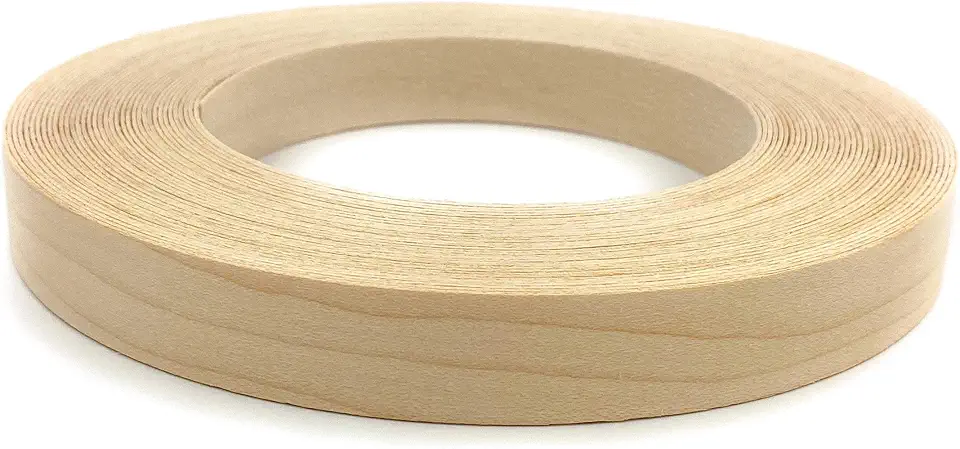
Maple Edge Banding Roll - Pre-Glued
- Easily adheres with iron-on application
- Flexible maple veneer for a seamless look
- Smooth sanded finish for DIY projects
- Hot melt adhesive ensures durability
- Made in the USA for quality assurance.
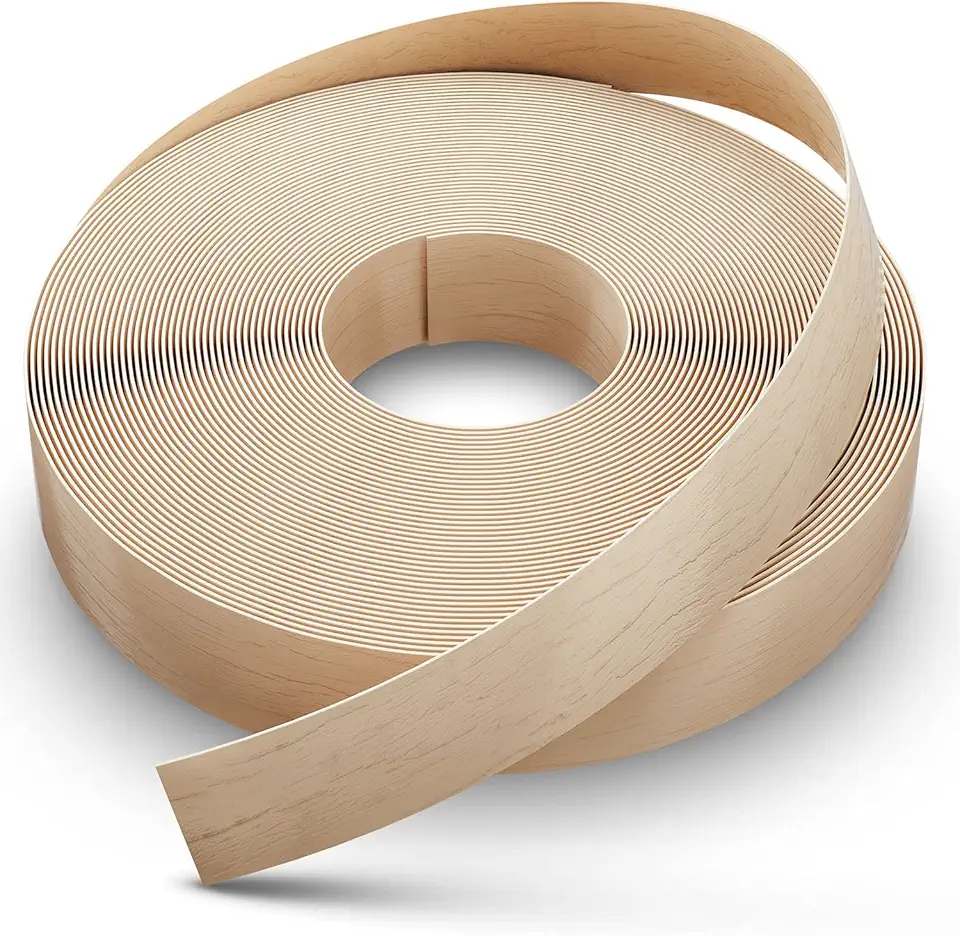
Dovetail Birch Veneer Tape - 50Ft
- Pre-glued for easy application
- Real wood veneer for authentic look
- Perfect for edging and trimming
- Sturdy adhesion with iron-on method
- Ideal for both professional and DIY use.

Maple Wood Veneer Sheet - 10ft Roll
- Flexible for easy application
- Natural wood finish enhances aesthetics
- Ideal for cabinets and furniture
- Great for home renovation projects
- Versatile use for DIY enthusiasts.
Veneer Application Techniques
Contact cement provides strong, permanent bonds for large veneer applications. Vacuum pressing creates professional results for complex shapes or multiple pieces. Iron-on veneers work well for small projects and repairs, offering convenience for DIY applications without special equipment.
Finishing Compatibility by Grade
A-grade surfaces accept all finish types beautifully, from clear coats to stains and paints. B-grade works well for painted finishes but may require additional preparation for staining. Lower grades should be reserved for painted applications where surface defects won’t show through the finish.
Shop Smart: Pricing, Suppliers, and Certifications
Smart shopping strategies help you get the best value while avoiding common pitfalls that can derail your cabinet project. Price, supplier reputation, and certifications all play important roles in successful purchases.
Understanding Cabinet Plywood Pricing ($50-$150+ per sheet)
Cabinet grade plywood typically costs $50 to over $150 per 4×8-foot sheet, depending on species, thickness, and grade. Onsun Group notes that premium species like walnut or cherry command the highest prices. Domestic hardwoods like maple and birch offer good value for most cabinet projects.
Finding Reputable Suppliers
Established lumber yards and specialty woodworking suppliers typically offer better quality control than big box stores. Local suppliers often provide expert advice and may offer custom cutting services. Online suppliers can provide access to specialty species but require careful attention to shipping costs and damage protection.
Importance of FSC and Environmental Certifications
Forest Stewardship Council (FSC) certification ensures responsible forest management and sustainable harvesting practices. These certifications often indicate higher quality control standards throughout the manufacturing process. Certified products may cost slightly more but provide peace of mind about environmental impact and quality.
Avoiding Common Purchasing Mistakes
- Don’t buy without inspecting sheets in person when possible
- Avoid mixing different lots or manufacturers for visible surfaces
- Don’t underestimate material needs – buy extra for mistakes and future repairs
- Check return policies before purchasing, especially for special orders
- Verify grade markings match what you’re paying for
FAQs
What Is The Difference Between Cabinet Grade Plywood And Regular Plywood?
Cabinet grade plywood is typically made from higher-quality materials with a smoother finish suitable for visible cabinetry projects. Regular plywood is often used for structural purposes and may have more visible defects and rough surfaces.
How Thick Should Cabinet Grade Plywood Be For Kitchen Cabinets?
Cabinet grade plywood for kitchen cabinets is usually 3/4 inch thick. This thickness provides the strength and stability needed for cabinet boxes and shelves.
Is Cabinet Grade Plywood Waterproof Or Water-resistant?
While cabinet grade plywood is not fully waterproof, it may have water-resistant qualities depending on the adhesive and treatment used. It’s important to use protective finishes and sealants in areas prone to moisture.
What Types Of Wood Are Used In Cabinet Grade Plywood?
Cabinet grade plywood can be made from a variety of hardwoods such as oak, maple, cherry, and birch. These woods offer a nice appearance and durable surface for cabinetry.
How Much Does Cabinet Grade Plywood Typically Cost Per Sheet?
The cost of cabinet grade plywood varies based on wood type and thickness, but typically ranges between $50 to $150 per sheet. Prices may fluctuate based on the supplier and location.
